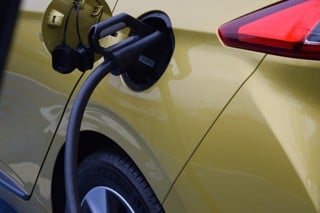The Government’s electric vehicle (EV) charging infrastructure plan has been welcomed by the Association of Fleet Professionals (AFP), but it says the challenge will be matching roll-out to demand.
The Electric Vehicle Infrastructure Strategy, which was published on Friday (March 25), commits £1.6 billion to the creation of 300,000 public charge points by 2030, as well as placing new legal responsibilities on charging providers covering means of payment and other factors.
AFP chair Paul Hollick said: “We need more chargers of the right type in the right locations to support the massive EV rollout of cars and vans to which the fleet sector is committed.
“It’s an area in which we have been campaigning heavily, including conversations with the Government, and we are pleased to see that most of what we have been asking for is covered in the new announcement.
“The challenge now is to ensure that the rollout that the strategy promises happens at the right pace, matching the development of the EV parc in terms of both numbers and location of charge points.”
Hollick says that it’s also imperative that the right type of charge points are available, especially those with larger bays that can handle larger electric vans. “This is something that is essential for fleet adoption of these vehicles,” he said.
The AFP’s Kerbside Charging Group would be reporting within 4-6 weeks on its work into the creation of a national ‘heat map’ showing where driver demand for kerbside charging was required.
“We’ve drawn in data covering something like 70,000 drivers of company cars and vans who live in apartments or terraced housing, don’t have the option of installing off-road charging, and need access to kerbside facilities,” explained Hollick.
“The aim of the Kerbside Charging Group is to ensure that there is a safe and secure kerbside facility within a five-minute walk of their homes.
“The creation of the heat map is a significant step in this process, we believe, and we will be sharing the data with national and local government as well as charge point operators.
“Our intention is that the new information is fed into the new government strategy and used as a detailed guide to where charging provision is most urgently needed.”
> Interested in comparing electric vehicle data? Check out our EV tool.
> Interested in ensuring the efficient use of EVs. Check out our dedicated editorial sections: Insight & policy | EV news | Charging & infrastructure | Costs & incentives | Benefit-in-kind | EV case studies | EV road tests























Login to comment
Comments
No comments have been made yet.